Methodology for Designing an Optimal Test Stand for Camera Thermal Drift Measurements and Its Stability Verification
Abstract
1. Introduction
2. Method of Thermal Image Drift Measurements
2.1. Test Stand Assessments
2.1.1. Test Stand That Only Assumed Changes in the Intrinsic Parameters
2.1.2. Test Stand That Employed Less Reliable Structural Materials
2.1.3. Test Stands That Disregarded the Thermal Influence on the Structural Elements
2.2. Conditions for Optimal Thermal Drift Test Stands
- The possibility to change the ambient temperature within a reasonable temperature range that reflects realistic camera operating conditions;
- The isolation of the temperature variations to only the camera and lens; the used image artifact should be temperature independent, or the positions of its various features in response to temperature changes should be known and calibrated in the camera coordinates;
- Unchanging positions of the camera and the artifact, irrespective of the temperature changes;
- Unchanging ambient lighting conditions to properly detect the characteristic points;
- The possibility of changing the ambient temperature of the camera surroundings is crucial for obtaining image drift data from cameras under varying ambient temperatures; the warming up of the camera is not the only source of a change in temperature. The variation in the ambient temperature should be limited to the surroundings of the tested camera. As mentioned previously, using air conditioning to control the ambient temperature is assumed to have effects on all elements in the testing environment, including the floor and the structures that keep the camera and image artifact stable; thus, it must be avoided for our purposes. The image artifact’s position relative to the camera and its dimensions must be independent of the controlled ambient temperature around the camera. The number of elements that link the camera to the image artifact should be minimized, as well as the types of material used. These conditions are based on our assumptions that the effect of varying temperatures is present in both the intrinsic and extrinsic parameters of the tested camera;
- Test stands built according to these conditions can be applied to test the effects of temperature changes on various measurement systems which employs a 2D camera, including 3D scanners, microscopes, and various vision systems used for quality control.
3. The Test Stand
3.1. Test Stand Structure
3.2. Systemization of the Experimental Setup
3.3. Assumption of the Temperature Influence on the Refractive Index of Air
- This design of the test stand introduced the advantage of limiting the temperature variation to only the tested camera. However, this setup exposed the result to influence by the spatially changing refractive indices of air due to maintaining different temperatures inside and outside the thermal chamber. To determine whether this phenomenon would affect the observed image drift, the expected image deformation was simulated considering Edlén’s formula [19], Snell’s law, and the geometry of the experimental setup. The ambient temperature T0 and the ambient temperature outside the thermal chamber T0+ΔT were assumed to be 20 °C and 45 °C, respectively, which corresponded to the maximum temperature deviation between the inside and the outside of the thermal chamber in the conducted measurements. The simplified sketch describing the ray trances in the test stand is presented in Figure 3a.
4. Verification Method
4.1. Test Stand Extension
4.2. Experiment Process
5. Results
6. Conclusions
Author Contributions
Funding
Institutional Review Board Statement
Informed Consent Statement
Data Availability Statement
Conflicts of Interest
References
- Fiorucci, M.; Verschoof-van der Vaart, W.B.; Soleni, P.; Le Saux, B.; Traviglia, A. Deep Learning for Archaeological Object Detection on LiDAR: New Evaluation Measures and Insights. Remote Sens. 2022, 14, 1694. [Google Scholar] [CrossRef]
- Zohdy, B.; Ramadan, N.; Mahmood, M.; Hefny, H. Machine Vision Application on Science and Industry: Machine Vision Trends. In Optoelectronics in Machine Vision-Based Theories and Applications; IGI Global: Hershey, PA, USA, 2019; Chapter 8; pp. 233–251. [Google Scholar]
- Adamczyk, M.; Kamiński, M.; Sitnik, R.; Bogan, A.; Karaszewski, M. Effect of temperature on calibration quality of structured-light three-dimensional scanners. Appl. Opt. 2014, 53, 5154. [Google Scholar] [CrossRef] [PubMed]
- Norouzi, A.; Rahim, M.S.M.; Altameem, A.; Saba, T.; Rad, A.E.; Rehman, A.; Uddin, M. Medical Image Segmentation Methods, Algorithms, and Applications. IETE Tech. Rev. 2014, 31, 199–213. [Google Scholar] [CrossRef]
- Gomes, P. Surgical robotics: Reviewing the past, analysing the present, imagining the future. Robot. Comput.-Integr. Manuf. 2011, 27, 261–266. [Google Scholar] [CrossRef]
- Leo, G.D.; Liguori, C.; Pietrosanto, A.; Sommella, P. A vision system for the online quality monitoring of industrial manufacturing. Opt. Lasers Eng. 2017, 89, 162–168. [Google Scholar] [CrossRef]
- Adamczyk, M.; Liberadzki, P.; Sitnik, R. Temperature Compensation Method for Mechanical Base of 3D-Structured Light Scanners. Sensors 2020, 20, 362. [Google Scholar] [CrossRef] [PubMed]
- D’Emilia, G.; Gasbarro, D.D. Review of techniques for 2D camera calibration suitable for industrial vision systems. J. Phys. Conf. Ser. 2017, 841, 012030. [Google Scholar] [CrossRef]
- Elias, M.; Eltner, A.; Liebold, F.; Maas, H.-G. Assessing the Influence of Temperature Changes on the Geometric Stability of Smartphone- and Raspberry Pi Cameras. Sensors 2020, 20, 643. [Google Scholar] [CrossRef] [PubMed]
- Smith, M.; Cope, E. The effects of temperature variation on single-lens-reflex digital camera calibration parameters. Int. Arch. Photogramm. Remote Sens. Spat. Inf. Sci. 2012, 38, 554–559. [Google Scholar]
- Handel, H. Compensation of thermal errors in vision based measurement systems using a system identification approach. Int. Conf. Signal Process. 2008, 9, 1329–1333. [Google Scholar] [CrossRef]
- Pan, B.; Shi, W.; Lubineau, G. Effect of camera temperature variations on stereo-digital image correlation measurements. Appl. Opt. 2015, 54, 10089–10095. [Google Scholar] [CrossRef] [PubMed]
- Yu, Q.; Chao, Z.; Jiang, G.; Shang, S.; Fu, S.; Liu, X.; Zhu, Z.; Liu, H. The effects of temperature variation on videometric measurement and a compensation method. Image Vis. Comput. 2014, 32, 1021–1029. [Google Scholar] [CrossRef]
- Adamczyk, M.; Liberadzki, P.; Sitnik, R. Temperature Compensation Method for Digital Cameras in 2D and 3D Measurement Applications. Sensors 2018, 18, 3685. [Google Scholar] [CrossRef]
- Handel, H. Analyzing the Influences of Camera Warm-Up Effects on Image Acquisition. In Computer Vision–ACCV 2007. Lecture Notes in Computer Science, Vol 4844; Springer: Berlin/Heidelberg, Germany, 2007; pp. 258–268. [Google Scholar] [CrossRef]
- Podbreznik, P.; Potočnik, B. Assessing the influence of temperature variations on the geometrical properties of a low-cost calibrated camera system by using computer vision procedures. Mach. Vis. Appl. 2012, 23, 953–966. [Google Scholar] [CrossRef]
- UI-5282SE-C Rev.4. Available online: https://en.ids-imaging.com/store/ui-5282se-rev-4.html (accessed on 4 July 2022).
- Akurat S8Mark2. Available online: https://www.akurat.lighting/en/products/soft-panels/s8-mark-2-strong-lenticular-130w-led-panel (accessed on 4 July 2022).
- Bönsch, G.; Potulski, E. Measurement of the refractive index of air and comparison with modified Edlén’s formulae. Metrologia 1998, 35, 133. [Google Scholar] [CrossRef]
- Flir Grasshopper3 GS2-GE-50S5M-C. Available online: https://saber1.com/product/flir-grasshopper3-gige-gs2-ge-50s5m-c/ (accessed on 6 September 2022).
- Sładek, J.; Sitnik, R.; Kupiec, M.; Błaszczyk, P. The Hybrid Coordinate Measurement System as a Response to Industrial Requirements. Metrol. Meas. Syst. 2010, XVII, 109–118. [Google Scholar] [CrossRef]
- Sitnik, R. New method of structure light measurement system calibration based on adaptive and effective evaluation of 3D-phase distribution. In Optical Measurement Systems for Industrial Inspection IV; SPIE: Munich, Germany, 2005; Volume 5856. [Google Scholar] [CrossRef]
- Chen, R.; Xu, J.; Chen, H.; Su, J.; Zhang, Z.; Chen, K. Accurate calibration method for camera and projector in fringe patterns measurement system. Appl. Opt. 2016, 55, 4293–4300. [Google Scholar] [CrossRef] [PubMed]

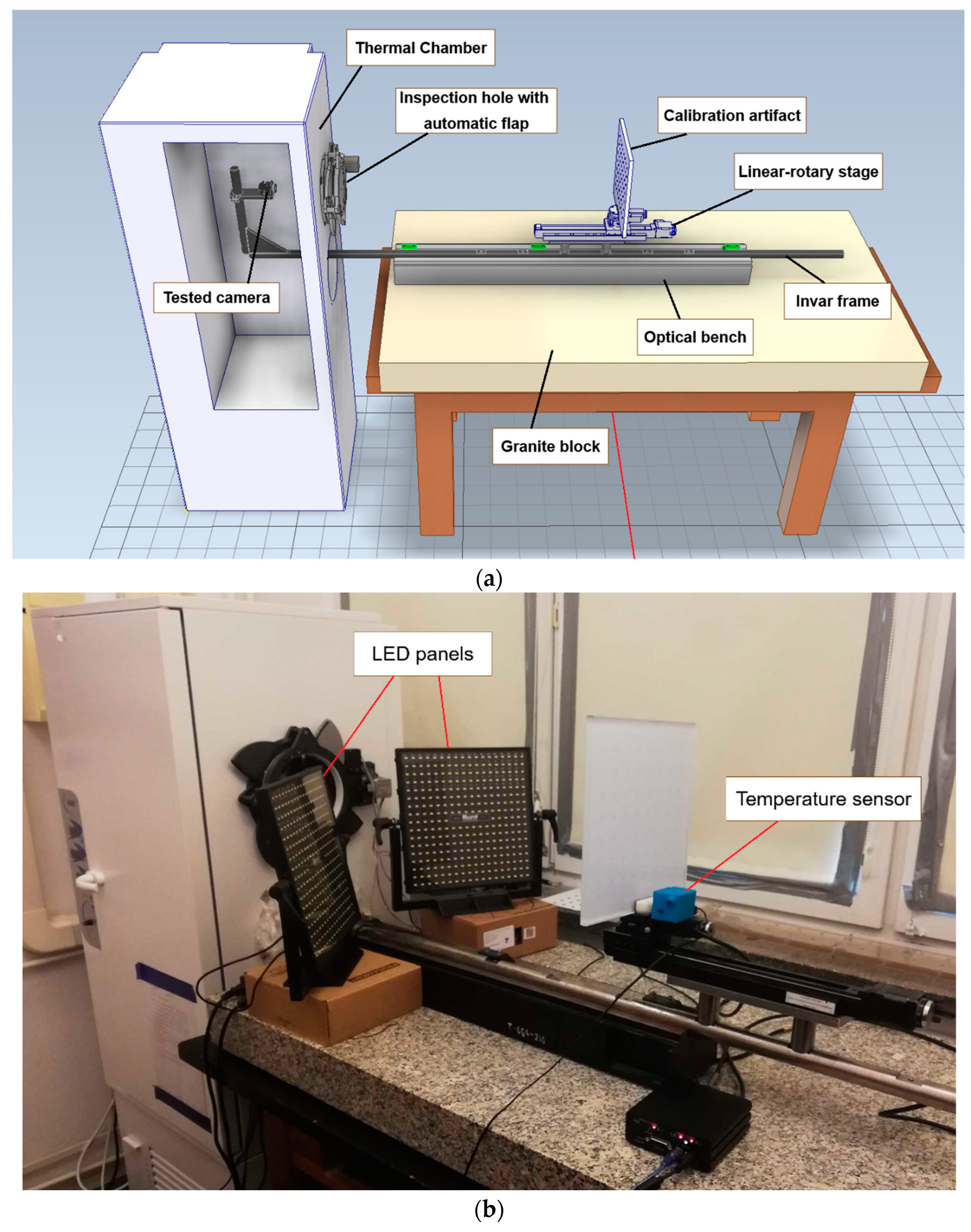
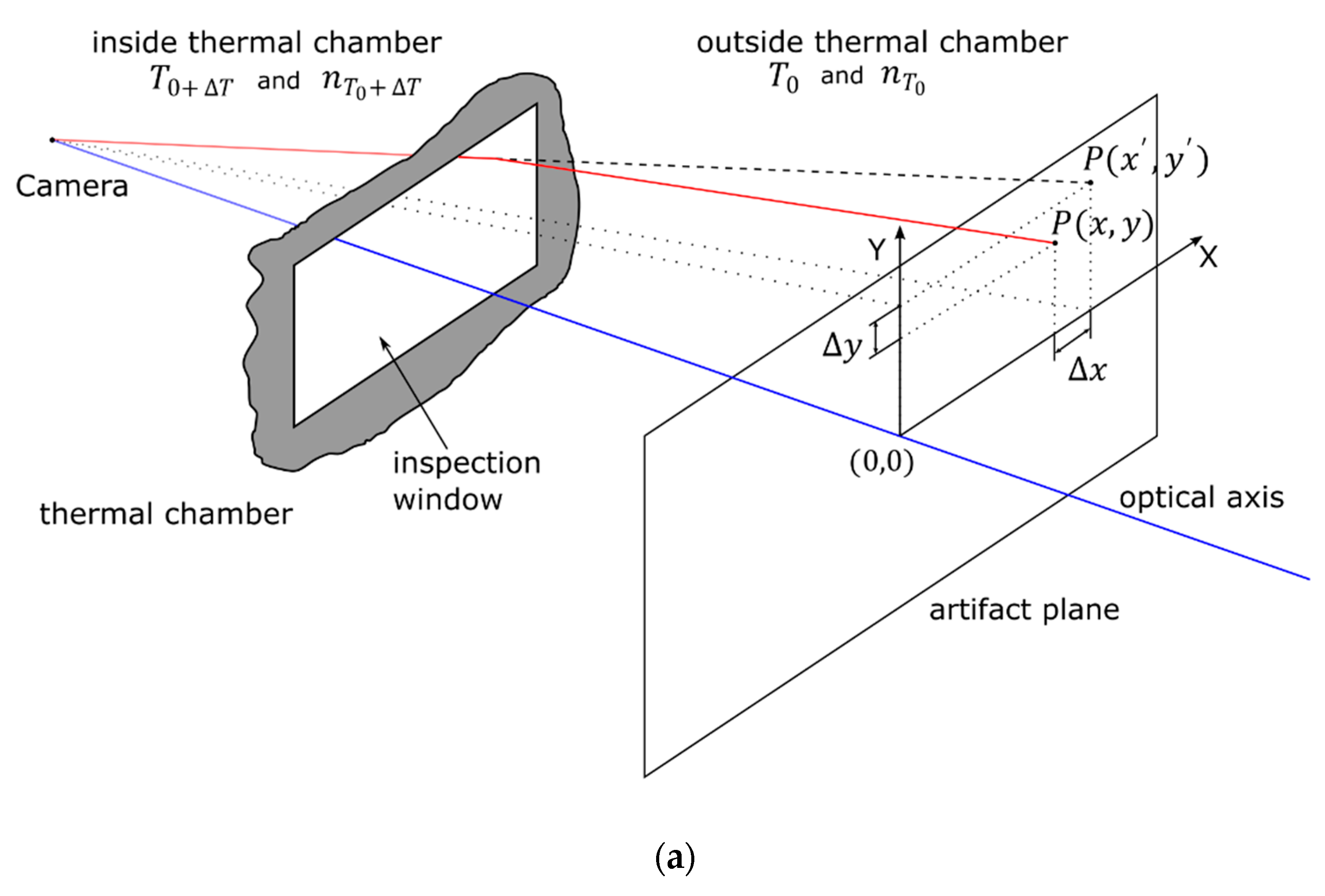
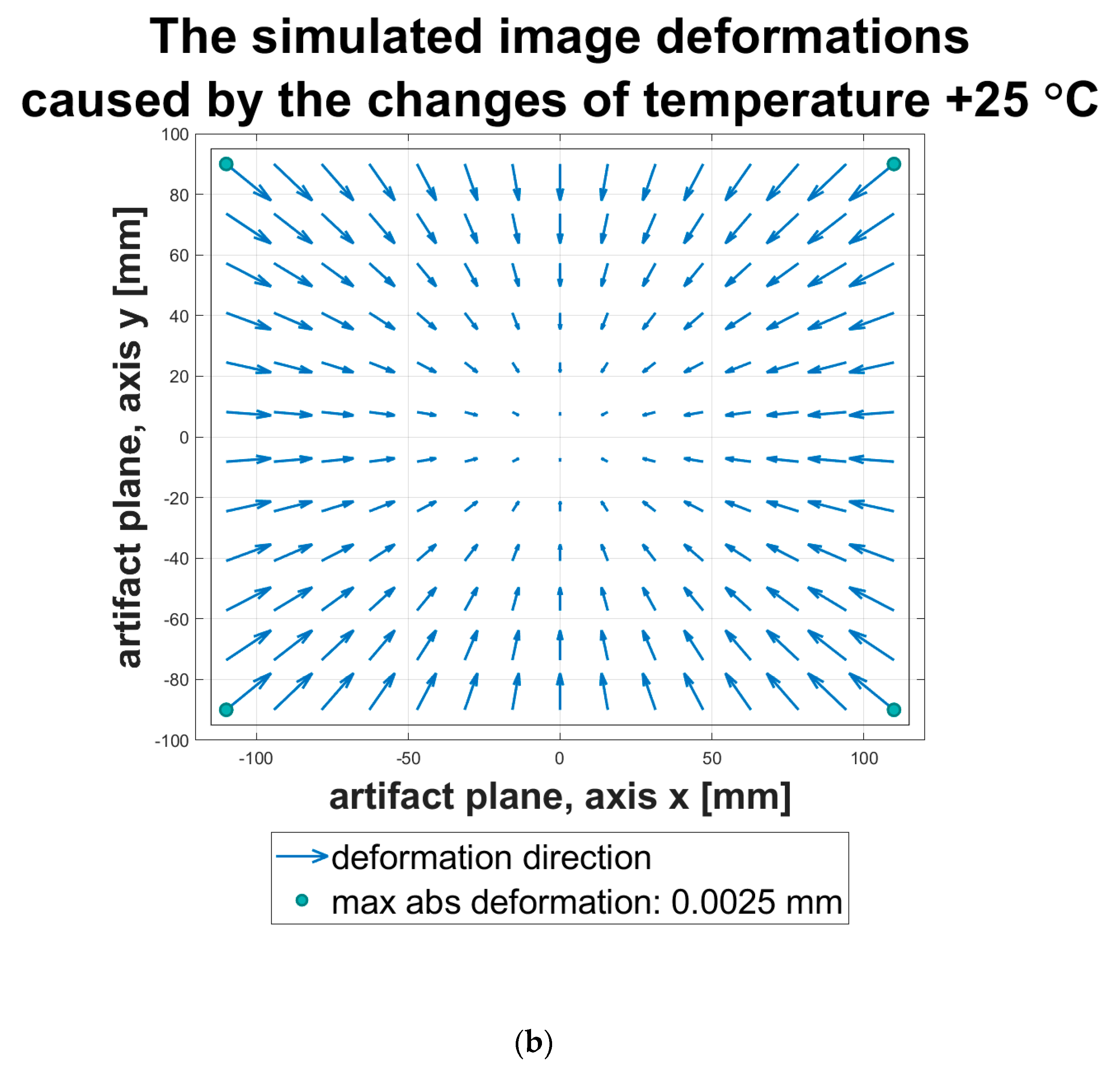
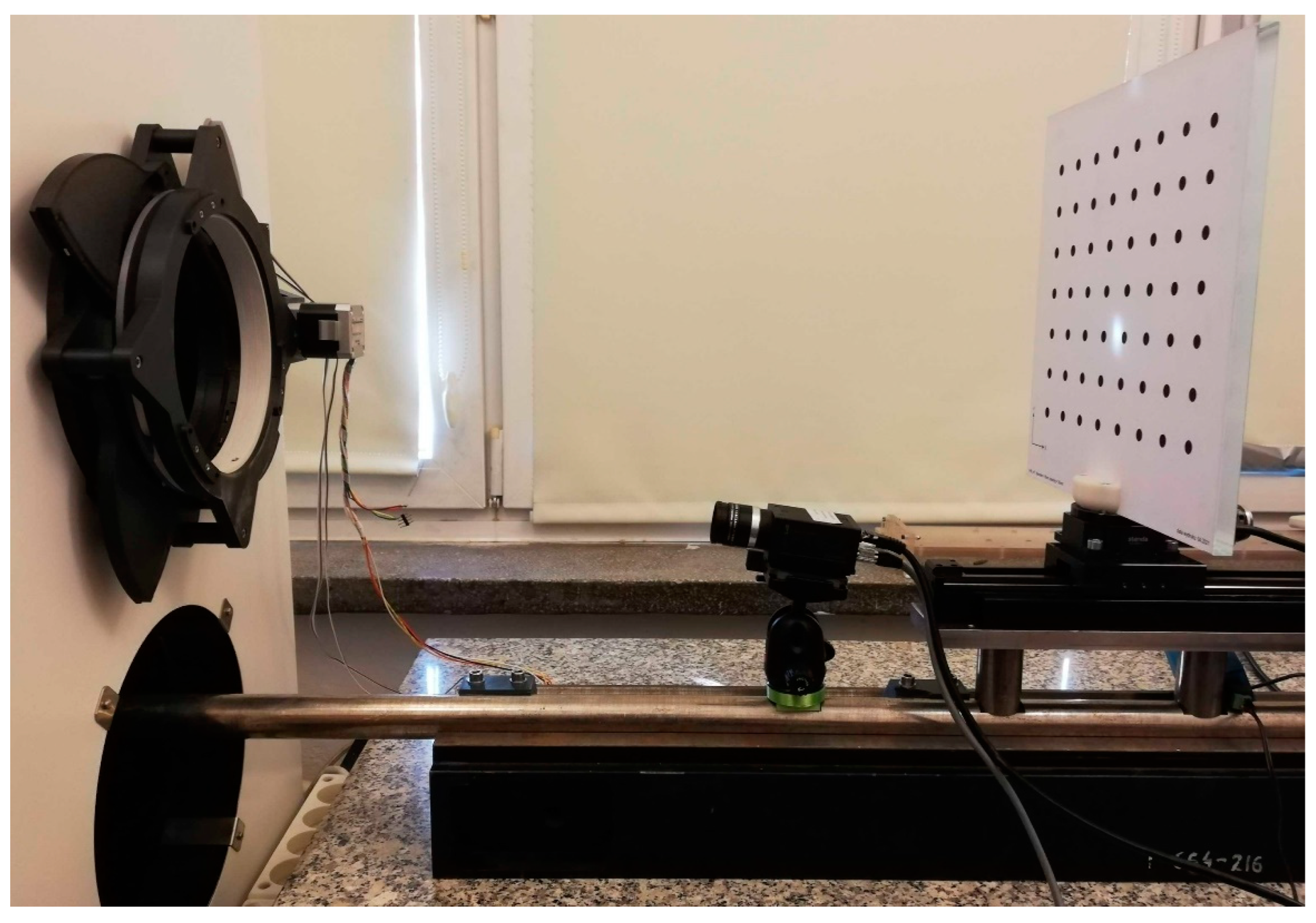
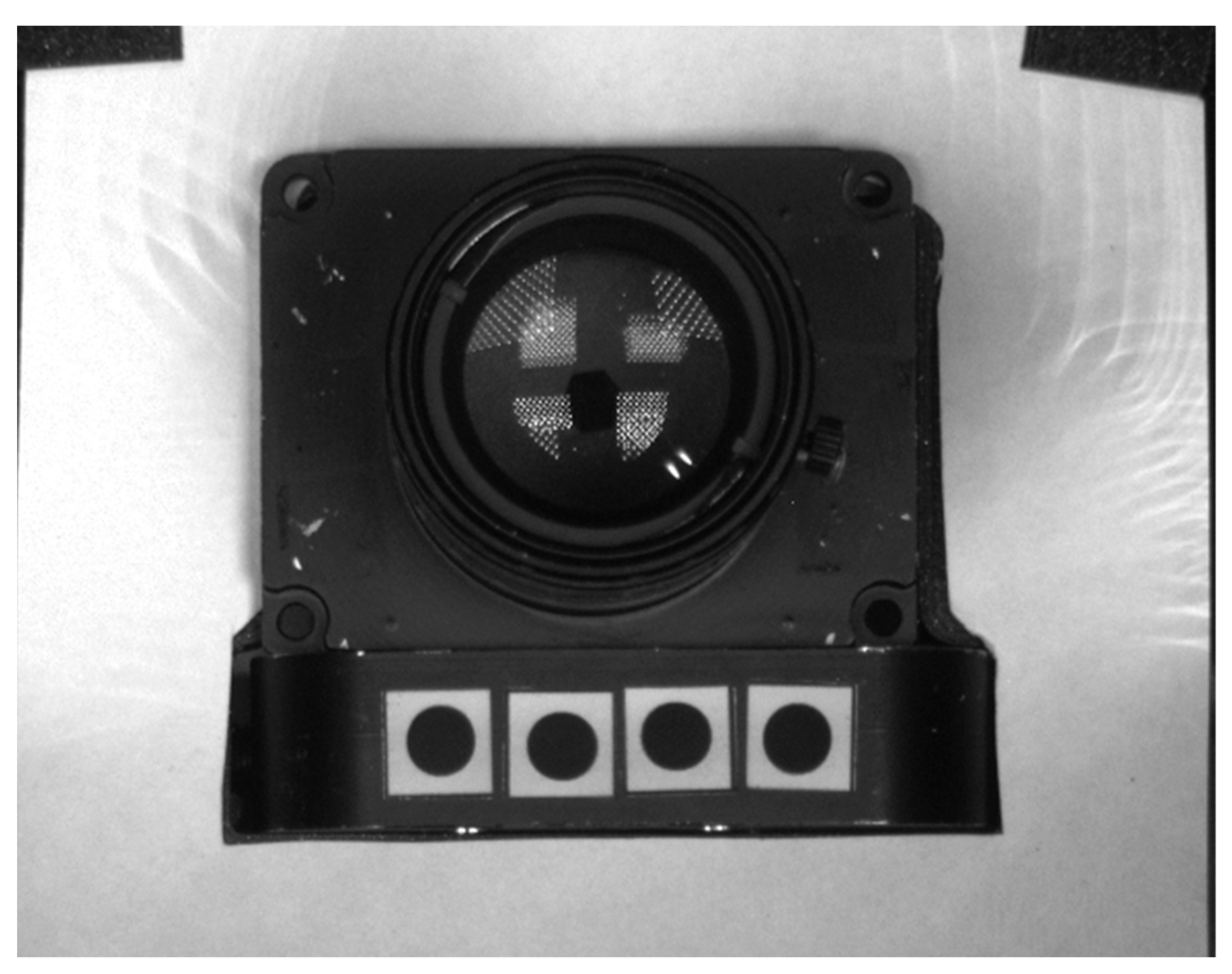

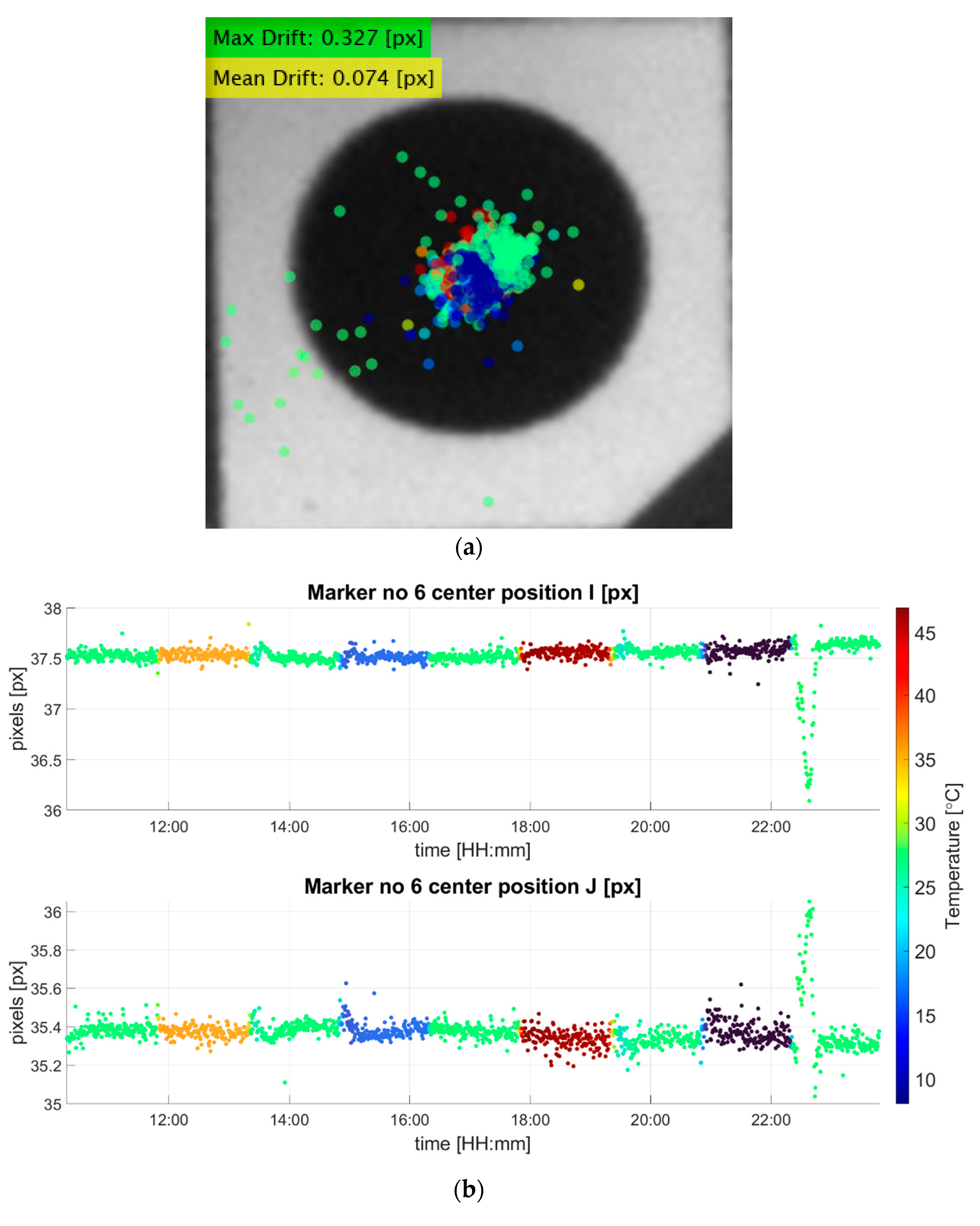

Publisher’s Note: MDPI stays neutral with regard to jurisdictional claims in published maps and institutional affiliations. |
© 2022 by the authors. Licensee MDPI, Basel, Switzerland. This article is an open access article distributed under the terms and conditions of the Creative Commons Attribution (CC BY) license (https://creativecommons.org/licenses/by/4.0/).
Share and Cite
Nimura, K.; Adamczyk, M. Methodology for Designing an Optimal Test Stand for Camera Thermal Drift Measurements and Its Stability Verification. Sensors 2022, 22, 9997. https://doi.org/10.3390/s22249997
Nimura K, Adamczyk M. Methodology for Designing an Optimal Test Stand for Camera Thermal Drift Measurements and Its Stability Verification. Sensors. 2022; 22(24):9997. https://doi.org/10.3390/s22249997
Chicago/Turabian StyleNimura, Kohhei, and Marcin Adamczyk. 2022. "Methodology for Designing an Optimal Test Stand for Camera Thermal Drift Measurements and Its Stability Verification" Sensors 22, no. 24: 9997. https://doi.org/10.3390/s22249997
APA StyleNimura, K., & Adamczyk, M. (2022). Methodology for Designing an Optimal Test Stand for Camera Thermal Drift Measurements and Its Stability Verification. Sensors, 22(24), 9997. https://doi.org/10.3390/s22249997








